Taking a break from writing about day trips out of Cuzco, instead this one will be about Cusco (I’ll explain later about the reason for the two spellings). It’s a city of three distinct parts in my opinion. Firstly, the Historical Centre of the city. Secondly, the archaeological sites within the city boarders and thirdly, the local residential areas. For this post I’m going to focus on Cusco Historical Centre. I will do another about Cusco; however, it will focus on the nightlife and festivals, these seem to happen every weekend, in fact nearly daily!
Cuzco Prologue
Cusco (Cuzco to some) in the majority is a dusty rundown city that at first glance seems contradictory to being Peru’s tourist hotspot…or any countries for that matter. It’s the 7th most populous city in Peru with circa. 500 000 people. Far from being a city with the hustle and bustle like Lima, the city feels more like a large town. You may think I dislike Cusco, that couldn’t be further from the truth. This city has authenticity, charm and vibrancy. Of course, the historical centre has a “touristy” feel and without doubt caters to its many visitors, but this isn’t Disney Land or Leicester Square.
The reason people come to Cusco is simple; this was the capital city of the Incas, then became a pivotal location for the Spanish Conquistadors, now it’s the centre point of Peru’s history. This is where most visitors start their Inca site visits, including the starting point for their Inca Trail Hike; the actual trail starts at Ollantaytambo, but Cusco is where most trails are organised.
What I remember most about Cusco is the rainbow colours throughout the city, dancing in the streets with melodic folk-type music as the soundtrack. My body took a bit of a hammering with hiking at altitude. Not fully heeding Coco’s advise nor what my body was telling me, I should have hiked at a slower pace. I got better with pacing myself as time passed but there was so much to see…I didn’t even see half. Altitude is one thing, excessive cardio exercising at altitude was tough on my body. I was hiking anything up to 19km a day; majority uphill walking &/or stairs).
All my memories about Cusco and surrounding areas are positive. Peru has been one of my best countries I visited. I often think back of this time with great nostalgia, especially when I listen to the street music.
The siku (Andean panpipes), the soundtrack to Peru. Played by a busker in Plaza de Armas – Cusco
Some locals practicing for one of the festivals/celebrations – Cuzco, Peru
Cusco History
I’ve covered a bit about Cusco’s history in my post about Sacsayhuaman, meaning I will try not to regurgitate the same information. It was inhabited before the Incas made it their capital city between 13th – 16th century when the Spanish Conquistadors invaded. The City of Cusco is a Unesco World Heritage Site and sits 3400m above sea level. It is the Historical Capital of Peru and Qusqu is the indigenous name. Contrary to most people using the spelling Cusco (obviously me too), it is more accurate and correct to use Cuzco, so I will do from now on.
Throughout Cuzco the Spanish influence is unmissable especially around Plaza de Armas. There’s no coincidence that to the resemblance of all Peru’s town squares as they were all built around the same time. If you don’t know what you’re looking for you would be forgiven for missing all the Inca architecture scattered across the city. Just look at any exposed foundation or base of the buildings. Here you will see the unmistakable stonemasonry of the Incas. The Spanish were methodical about demolishing Inca sites, most notably those with religious connections and palaces. The latter was a systematic approach to put themselves at the helm of ruling over the Inca.
As destructive as the Conquistadors were, they were also pragmatic. Completely destroy religious/venerated sites or enforce dominance by building their own churches atop of them, just like in Chinchero and here in Cuzco. As for building a Spanish city, they used many existing structures as foundations. Alternatively, use the dismantled structures as building material to build new buildings. Here in Cuzco Sacsayhuaman was used as the perfect quarry. No digging was required; just move the stones down the hill. Those too big to move were left, thankfully or else there would be no Sacsayhuaman to see today!
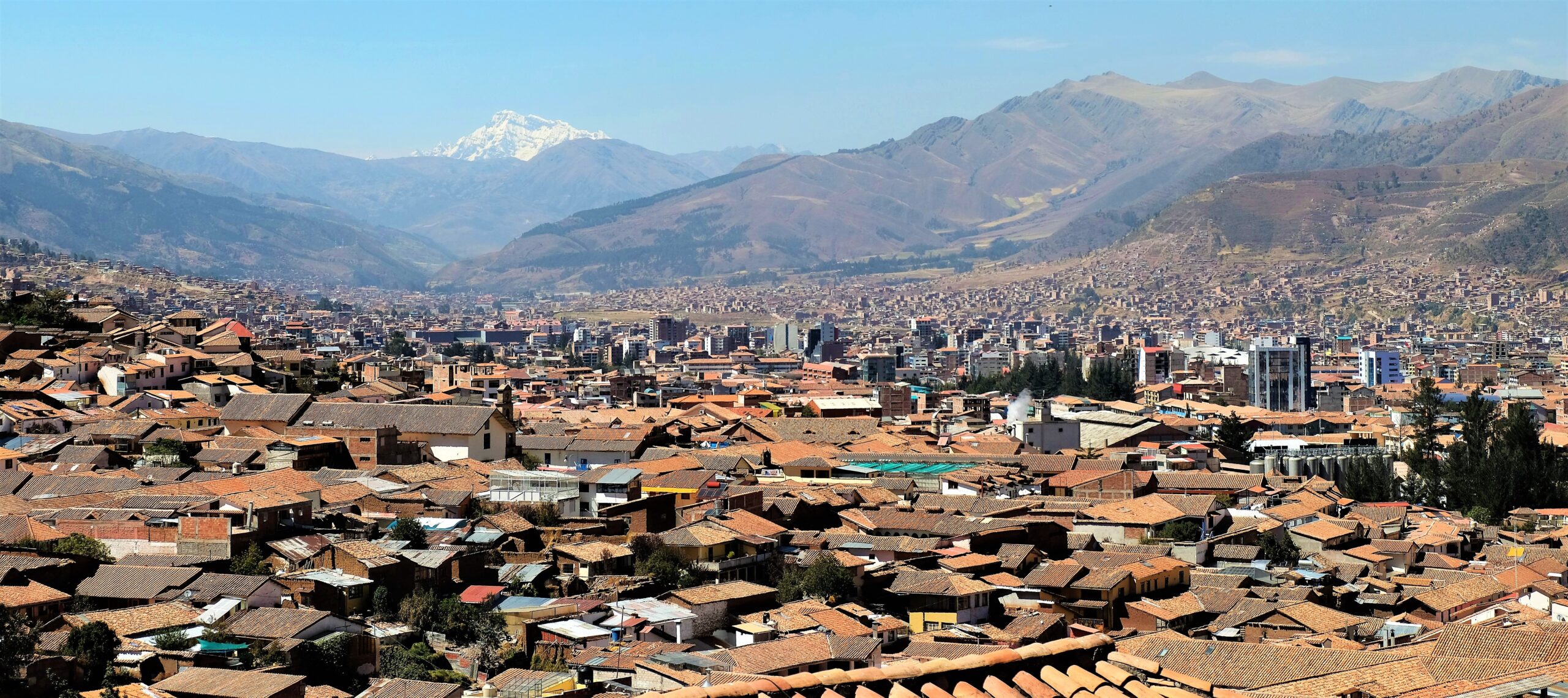
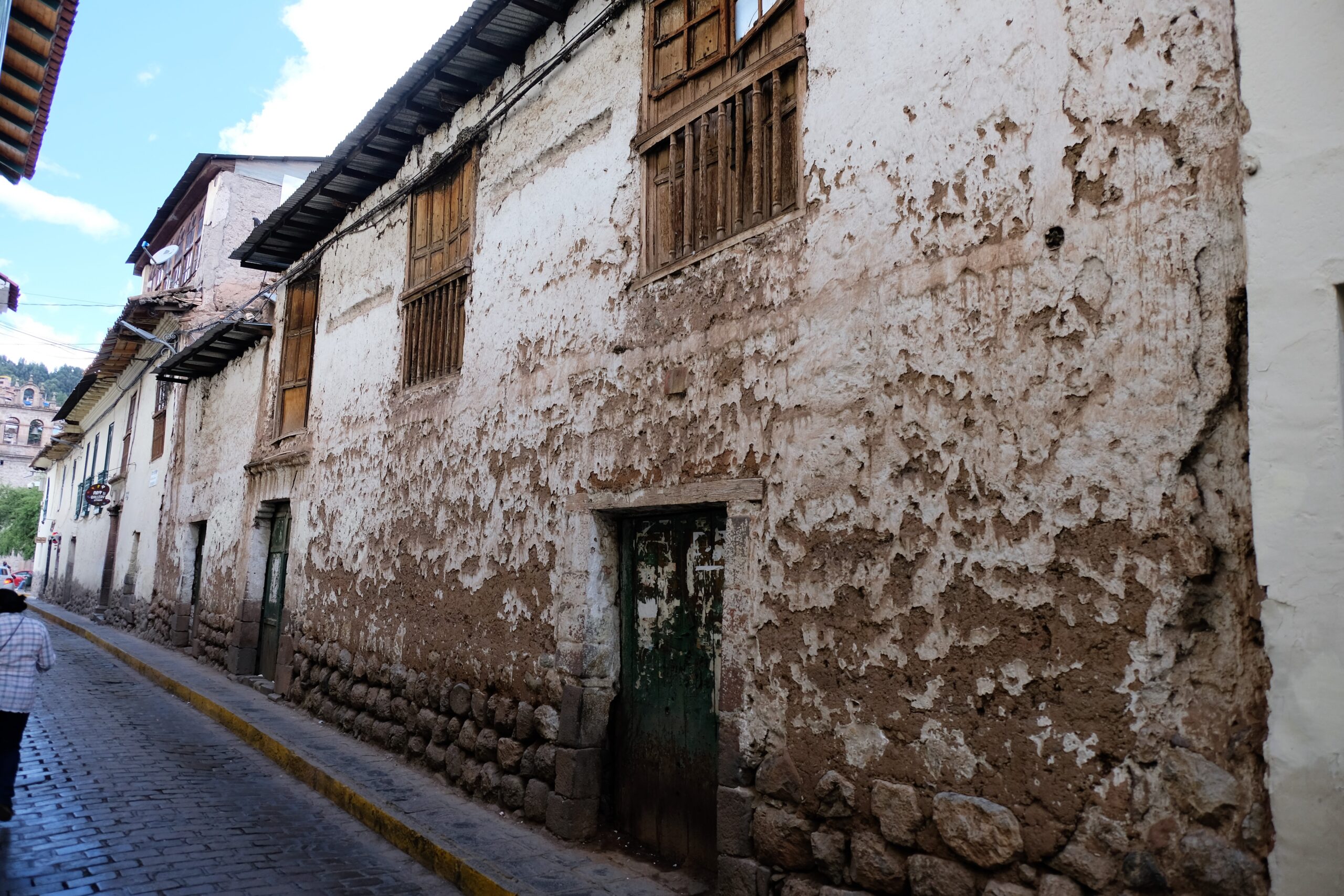
Centro Historico / Historical Centre
All the tourist highlights of the city such as museums, cathedrals etc. are within the historical centre – Sacsayhuaman is seen as outside the city, odd I know. Around the historical centre you will also find most of the accommodation, rule of thumb, the closer to Plaza de Armas the more expensive – that was one of the reasons I chose El Tuco.
Note – If you stay about 100m North Northwest through to East Northeast from Plaza de Armas, you may be in for a stairmaster session every time you head to your accommodation. You may have landed the perfect location in the heart of the city…only to be faced with a climb after a long day out or nice dinner.
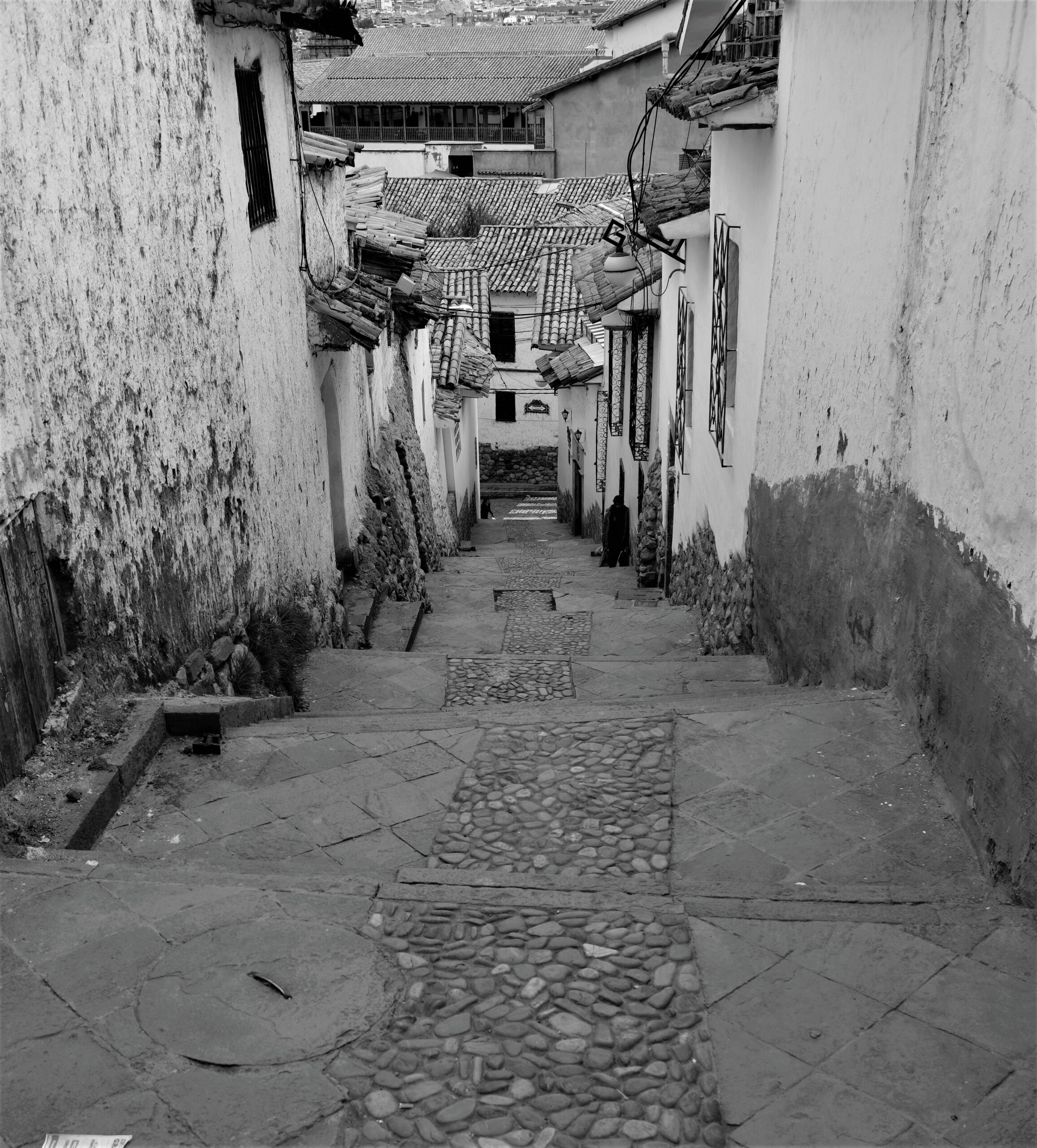
Plaza de Armas
The city revolves around Plaza de Armas. From parades, celebrations, any and all other gatherings the town square is where it happens. If the Historical Centre is the main body of Cuzco, then Plaza de Armas is the heart of the city. For my next blog about Cuzco (following my visit to Rainbow Mountain) I’ll include more pictures and videos of the carnival’esc atmosphere that happens around the town square. Plaza de Armas is the most “Western” part of the city, the lawned gardens of the square surrounded by Spanish architecture with wood facades. You’ll find some “Western” brands, as mentioned before this is where I regrettably bought a Starbucks.
Though this is the hotspot for visitors there aren’t many Western shops – it does have many vendors selling tourist ventures to many of the places I had visited and many more. One thing that really surprised me (negatively at first) was the many touts selling “massages”. At first I thought this was some seedy way of luring tourist, like some of the dodgier places in Southeast Asia. Apparently, this is a genuine service, which is fitting for a region dominated by their strong Catholic beliefs. I spoke to a few people about these massage parlours (people who had used them) and in every instance there was nothing seedy about them at all. On the plus side, a nice massage would be a nice way to sooth tired muscles after mountain hiking!
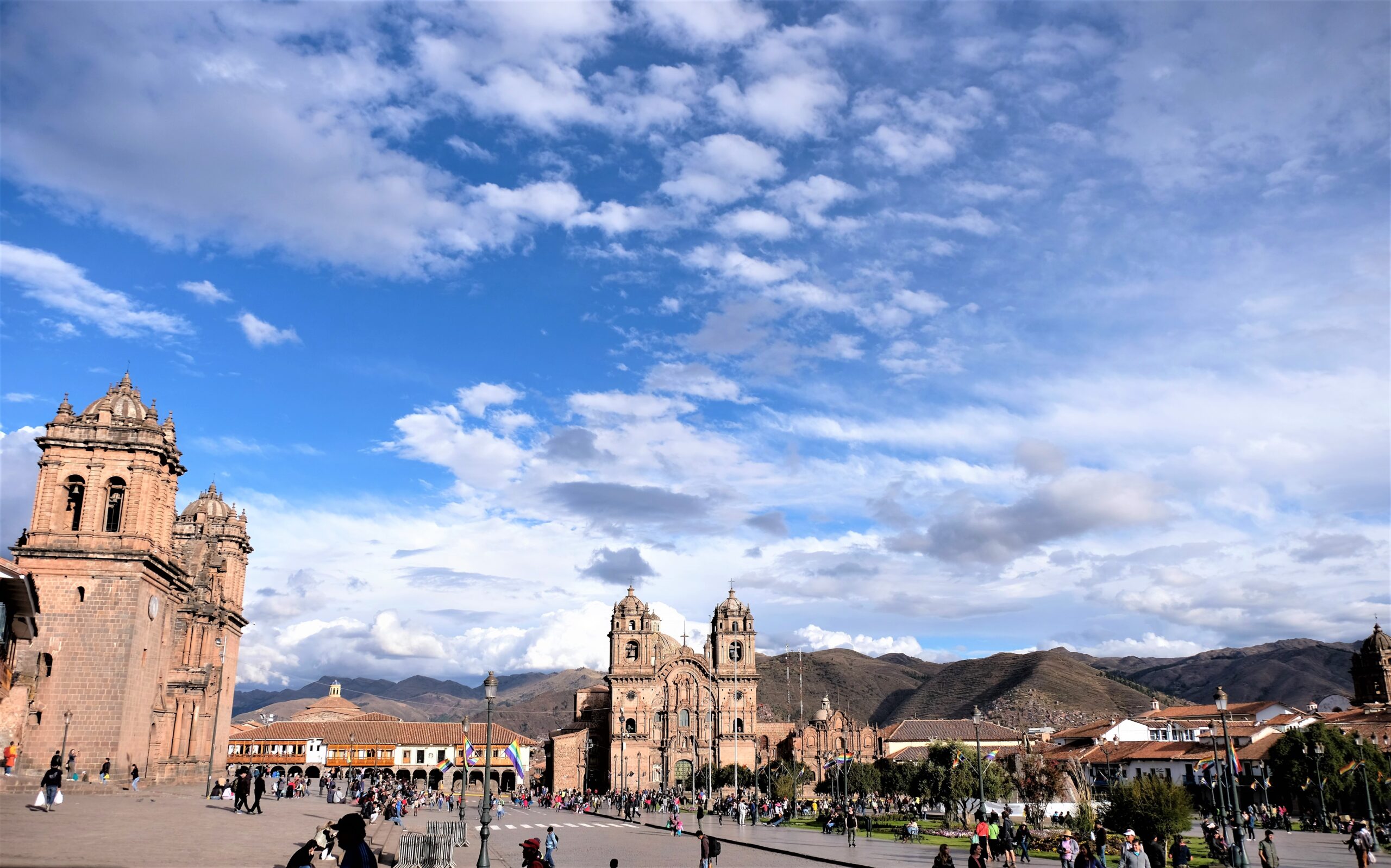
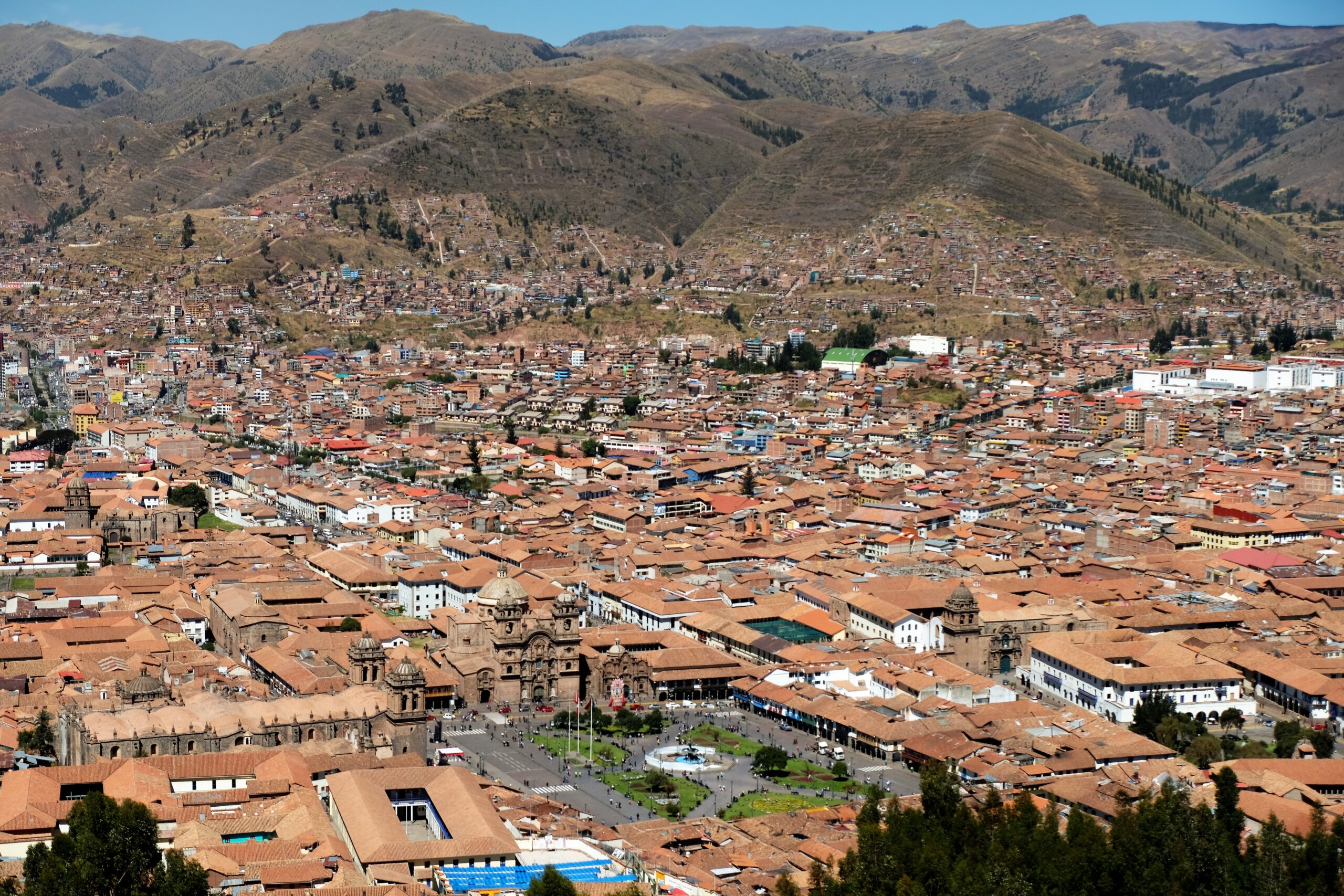
Iglesia de la Compañía de Jesús / Church of the Society of Jesus
Two churches dominate the quad area around Plaza de Armas. The first is Iglesia de la Compañía de Jesús/Church of the Society of Jesus, the second Cathedral Basilica of the Assumption of the Virgin/Cusco Cathedral. It doesn’t take an architectural historian to not baroque was the “in thing” when building many of the larger churches in the town centre. Keeping on script, the Spanish built the Church of the Society of Jesus on top of an Inca Palace. This Jesuit church started its construction in 1576, badly damaged in the 1650 earthquake then rebuilt and completed in 1668.
This used to be the location of Amarucancha, a palace belonging to Inca Huayna Cápac; one of the largest palaces in the city centre of the Inca capital city. Amarucancha was given to the Conquistador Hernando Pizarro, later bought by Diego de Silva y Guzmán and his wife, Teresa Orgoñez, who donated it to the Jesuits. I did go inside the church, but didn’t take any photos, why I don’t know or remember. There was something about my visit to Cusco, what would normally interest me seemed to disinterest me. My underlying motivation was to see Inca sites, must have been much stronger than I thought. Or simply photography wasn’t allowed.

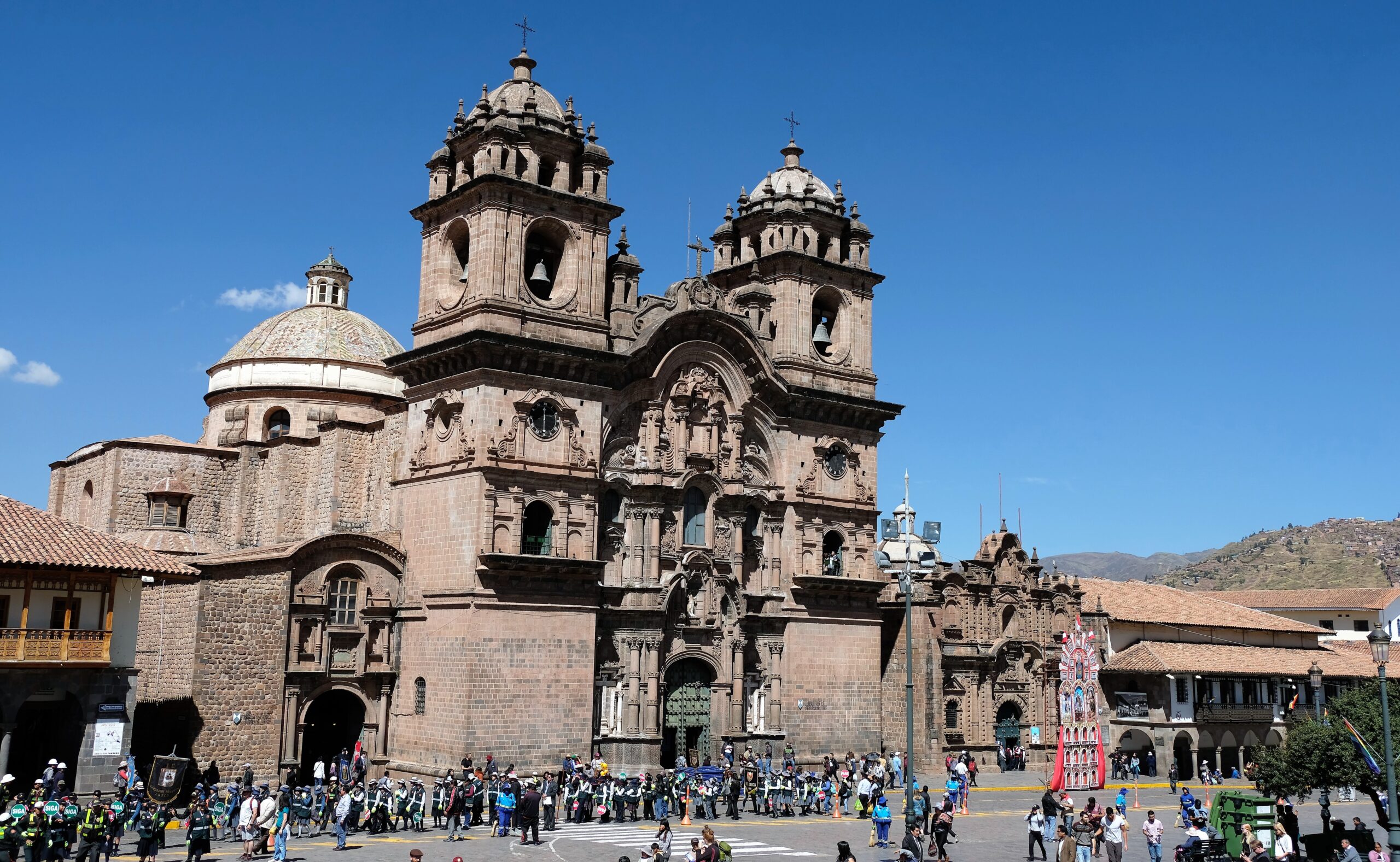
Cusco Cathedral / Cathedral Basilica of the Assumption of the Virgin
This used to be the site of the Inca temple called Kiswarkancha, the Inca palace of Viracocha; the great creator deity pre and during the Inca Empire. I have a picture of Viracocha carved into a mountain-face at Ollantaytambo. From the outside Cusco Cathedral has a grand staunch posture. Positioned above the level of the square below it stands prominent around Plaza de Armas. The stairs leading from the road makes the entrance seems grander, even before you cross the large platform in front of the imposing doors.
Built around the same time as Church of the Society of Jesus, Cusco Cathedral is the mother church of the Roman Catholic Archdiocese of Cusco. In the Gothic–Renaissance style with dashed of baroque most notably the entrance façade. Built with local labour (forced or willingly I don’t know), the Incas incorporated some of their own religious symbols, especially the jaguar. Whether this was done underhanded or allowed as a tool of appeasement by the Spanish, I don’t know. Cusco Cathedral was closed to visitors almost every time I had intended to visit. In fact if my memory serves me well, I didn’t see the doors open ever!
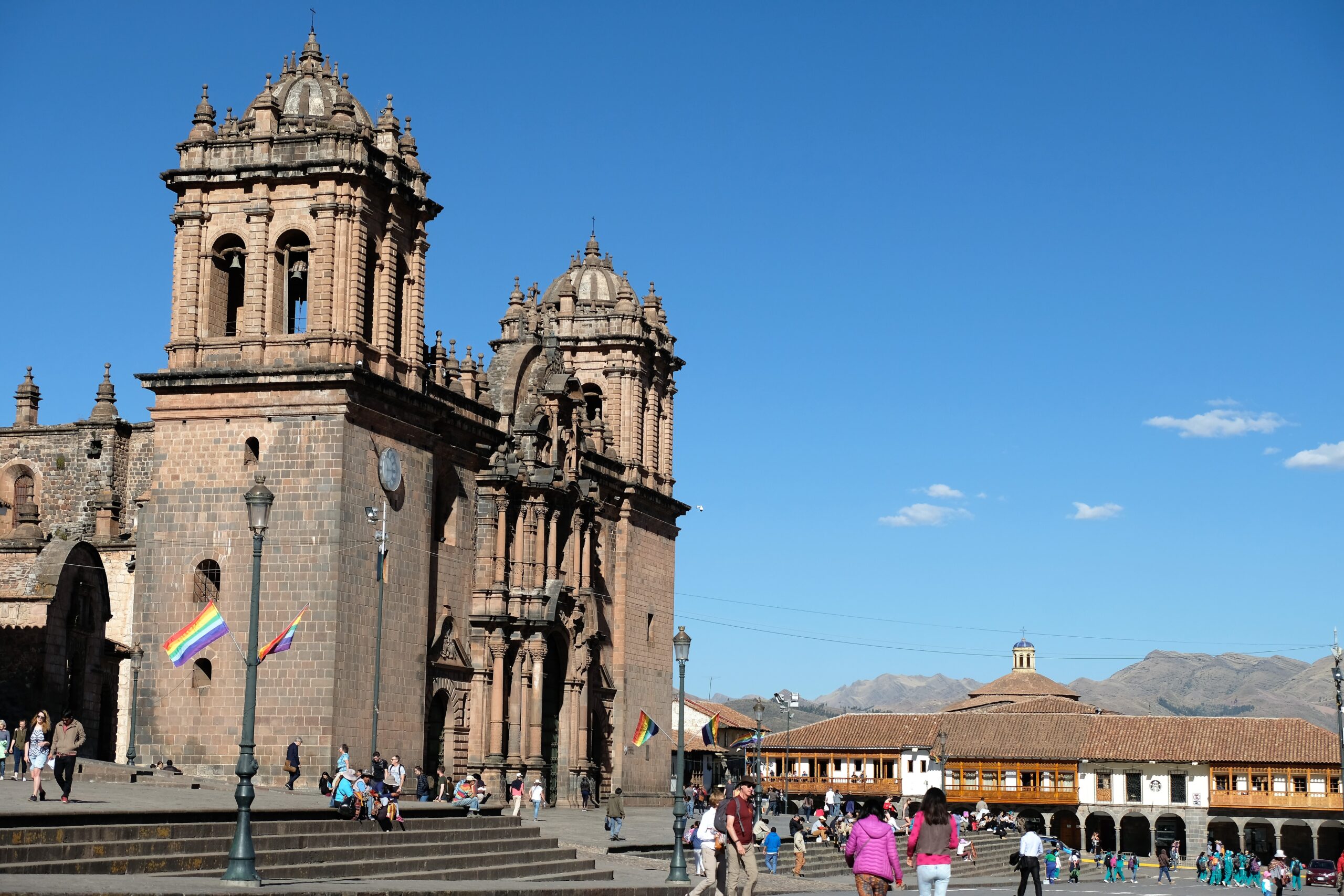
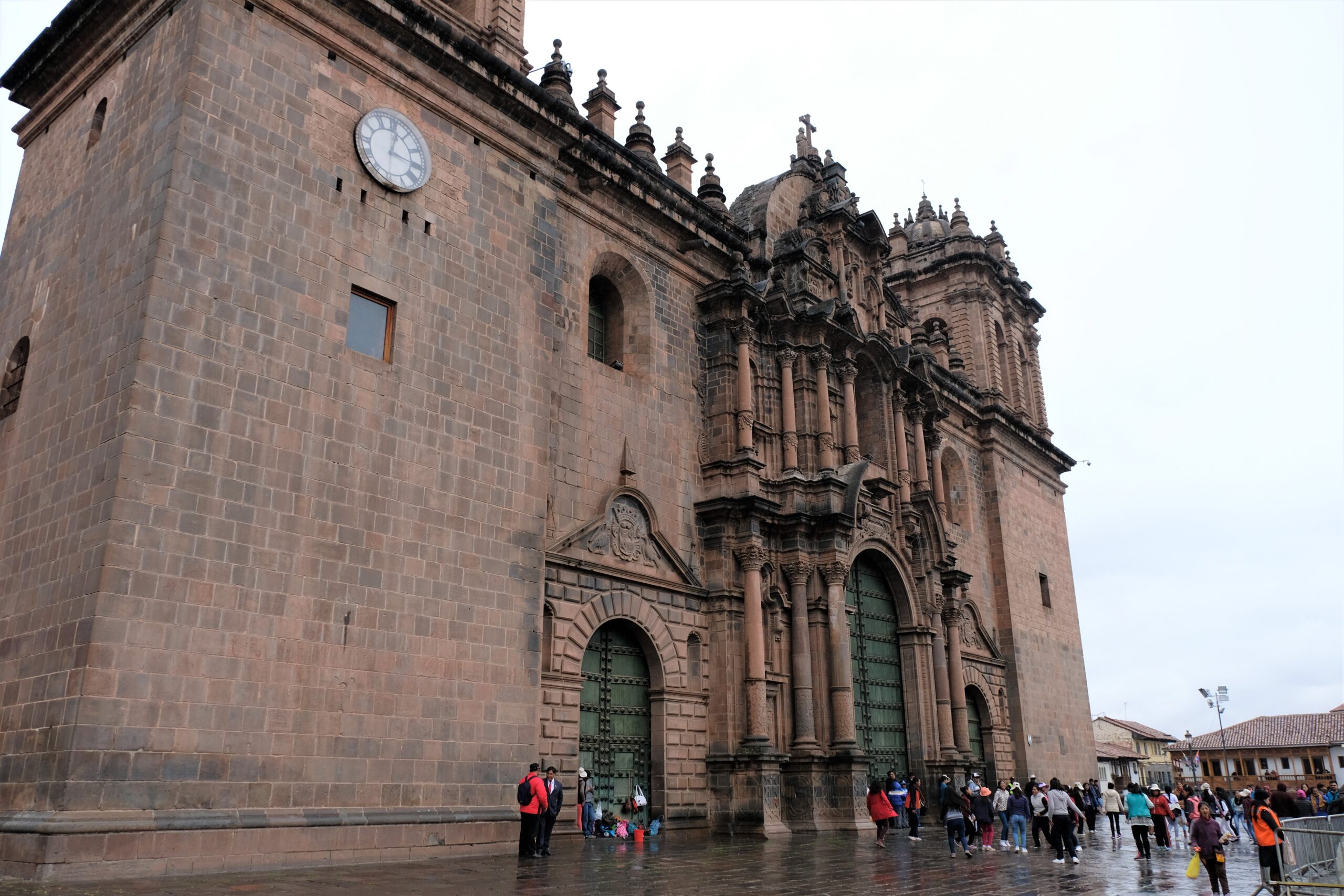
Iglesia del Triunfo / Church of Triumph
Adjoining Cusco Cathedral stands the oldest Christian church in Cuzco, Church of Triumph. It was built on top of another significant Inca site called Suntur Wasi; a ceremonial building honouring past Inca Royalty (I think). It was built not long after the Conquistadors settled in Cuzco, around 1538. To rub salt into the Inca wounds the Spanish gave the church a condescending name – that’s my opinion.
Templo de la Sagrada Familia / Temple of the Holy Family / Templo de Jesús, María y José
This church seems to have a few names including Capilla del Santisimo Sacramento. Facing Cuzco Cathedral, this church is on the left-hand side adjoined to the cathedral. It’s a Renaissance church completed in 1735, closed for 30 years it was restored and reopened in 1996
Coricancha / The Golden Temple
This was the Inca equivalent of the Church of the Holy Sepulchre, The Kaaba, Western Wall or Varansai. With a few spelling varieties e.g. Koricancha, Qoricancha, Qorikancha it gets its name from the Quechua words “quri” meaning gold and “kancha” meaning enclosure. This was the most important temple throughout the entire Inca Empire. Whereas there are many Temples of the Sun throughout the Inca Empire, this was referred to as the House of the Sun. Coricancha had an interior with walls lined with sheets of gold and finest stonemasonry. Sadly, all that is left area a few internal walls and some of its foundations. There is virtually nothing left of Caricancha, yet what does, gives a tantalising insight to how spectacular it would have been.
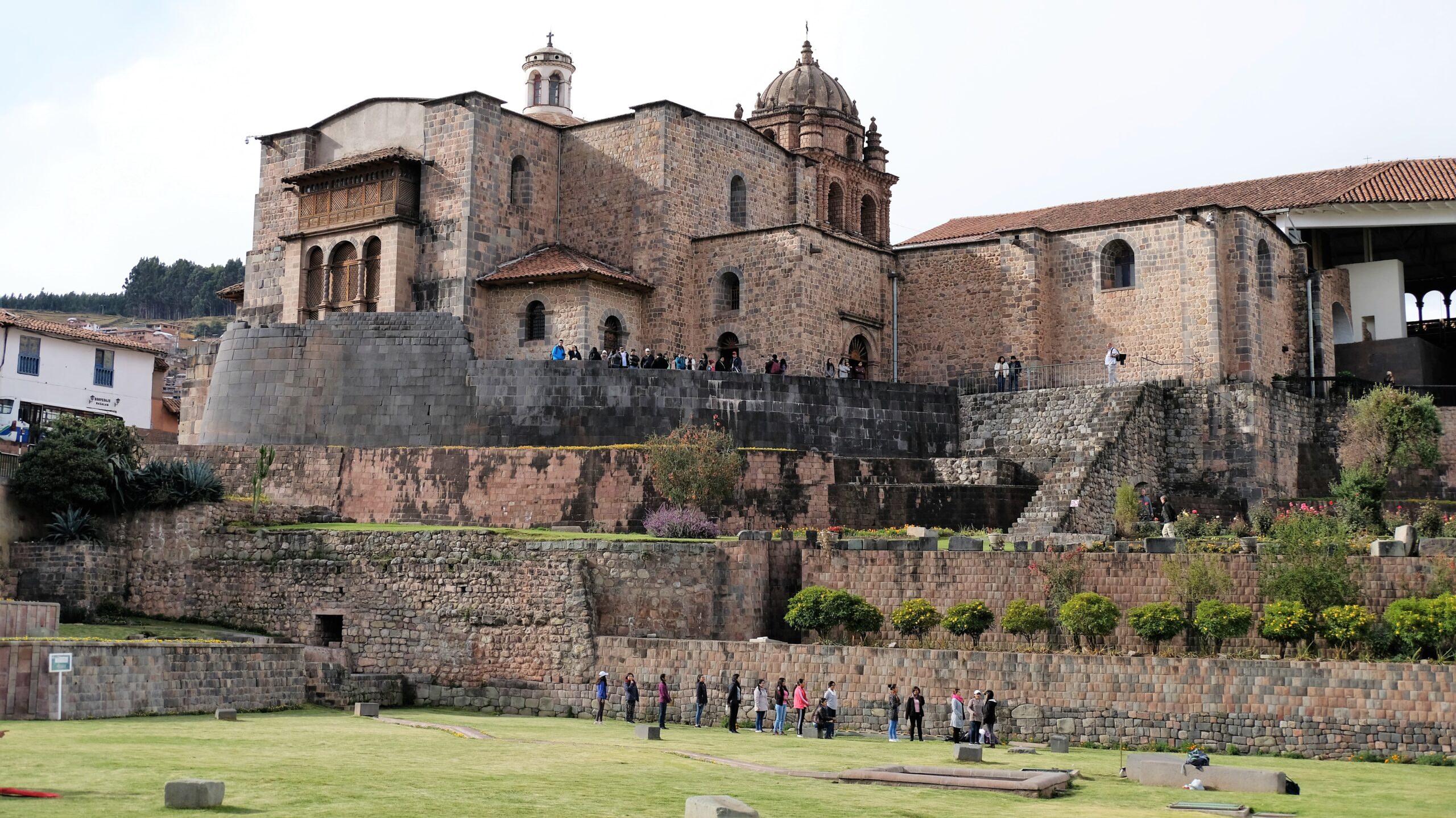
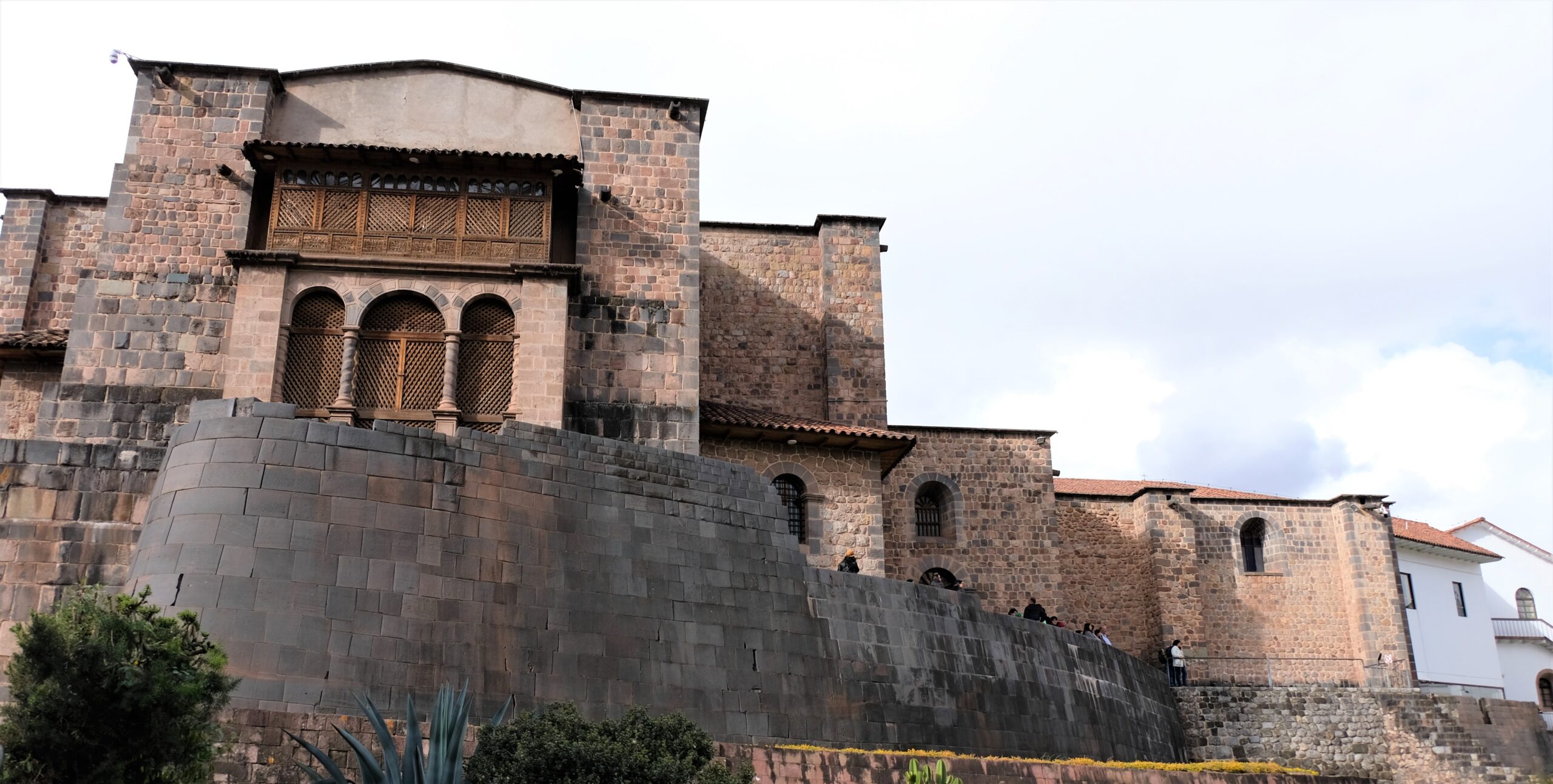
History of the Golden Temple
Dedicated to Inti, the Inca sun god, it used to be called Intikancha / Intiwasi. When Pachacuti / Pachakutiq Inca Yupanqui rebuilt Cuzco he drastically enhance the House of the Sun. Pachacuti didn’t just give it a facelift, he transformed it into the most splendid and opulent temple the Incas had ever seen. Once Pachacuti finished his renovation, Coricancha personified its name as House of the Sun; drenched in gold it would have glowed in the dimmest of light. Pachacuti didn’t just spend time on decorating Coricancha; he gifted the nuns (Mama-cunas) with gold and silver ornaments and vases to use in ceremonies. He adorned the previous seven/eight Inca rulers’ mummies with gold and silver jewellery, head-dresses, masks and displayed them on a golden bench. Even the temple’s courtyard had golden statues. Yes, Pachacuti overthrew the local rulers to create a new Empire, but he knew how to get the people on his side.
This was also a place for occasional human sacrifice. Who built the original temple isn’t clear, possibly Manco Cápac as he is recognised as the first ruler of the Incas. Spanish Conquistadors who first described Coricancha said the temple was “fabulous beyond belief. That says a lot considering the Spanish at the time was one of the, if not the most powerful and richest countries in Europe. Not even the most ostentatious palaces and churches in Europe has walls covered with sheets of gold. It’s no wonder the Incas treated the House of the Sun as such a sacrosanct place. Along with it honouring the Inti, it was also seen as the centre of the world, not just the Inca Empire.
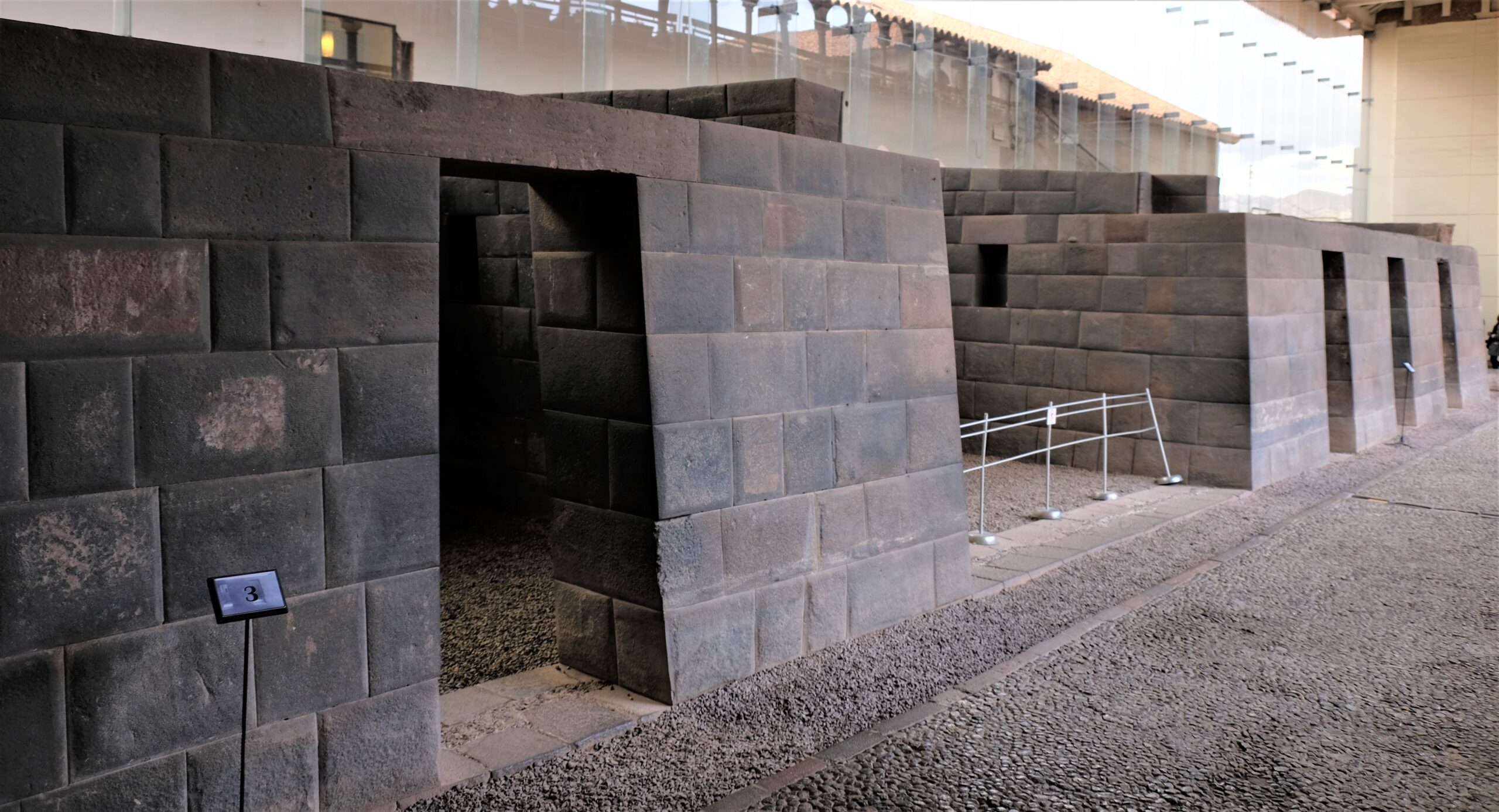

Destruction of the Golden Temple
To understand just how revered the Sapa Inca (Emperor/King/Ruler) was, when the Spanish demanded a ransom in gold for Atahualpa most of it came from Coricancha. More about Atahualpa in my post on Sacsayhuaman – Spanish conquest of Cusco. The gold which remained was later pillaged by the Conquistadors including the desecration of everything in the temple. Most of the temple was demolished except for the foundations and a few rooms in order to build build the Convent of Santo Domingo.
So far in Peru I had seen extraordinary structures with bewildering stonemasonry skill. However, the quality, consistency and finishing of the stone of Coricancha is second to none! These are not just well-cut polished stones; they interlock with sophisticated techniques. Perfectly round holes, hinges, perpendicular grooves (round and square), repetitive symmetric angles all done using granite as their muse. Many wonders of the ancient/old world have been destroyed, but I don’t think as many intentionally as was done throughout the Inca lands.
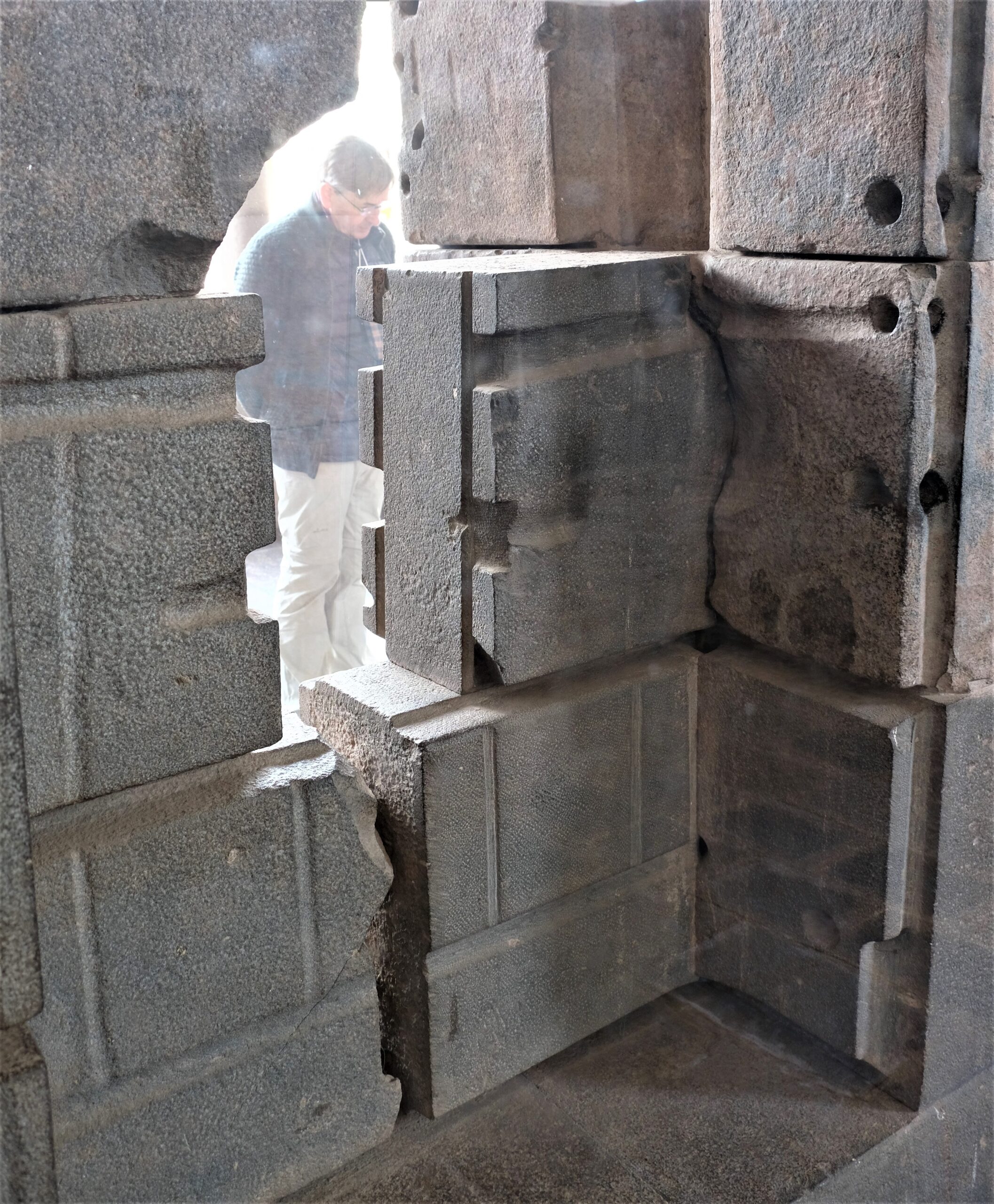


Convent of Santo Domingo
The land was given to the brother of Francisco Pizarro, Juan Pizarro, he in turn gave it to the Dominican Order somewhere around 1534. The first convent was completed in 1610 only for it to be totally destroyed in the 1650 earthquake – the only things left standing were those built by the Inca and the Inca foundations. Rebuilding took almost a century; the new convent was completed when the Baroque bell tower was erected late in the 18th century. Parts of the Convent were again damaged by the 1950 earthquake which are now restored.
I spent most of my attention in the museum part of the convent which revolves around the Coricancha and Incas. The museum in my opinion is the most comprehensive museum in Cuzco even though it is small, and information limited. In the middle of the convent’s beautiful courtyard is and inconspicuous trough; his was part of a fountain located inside the Coricancha complex. Viewed from the garden/park in front of the convent the most impressive part of the convent is unquestionably the foundations. The land has been raised with terraces, their retaining walls are an epic feat of landscaping rimmed with adobe style stones. Pink and black granite contrast against each other, the latter so smoothly polished it reflects the sun’s rays.

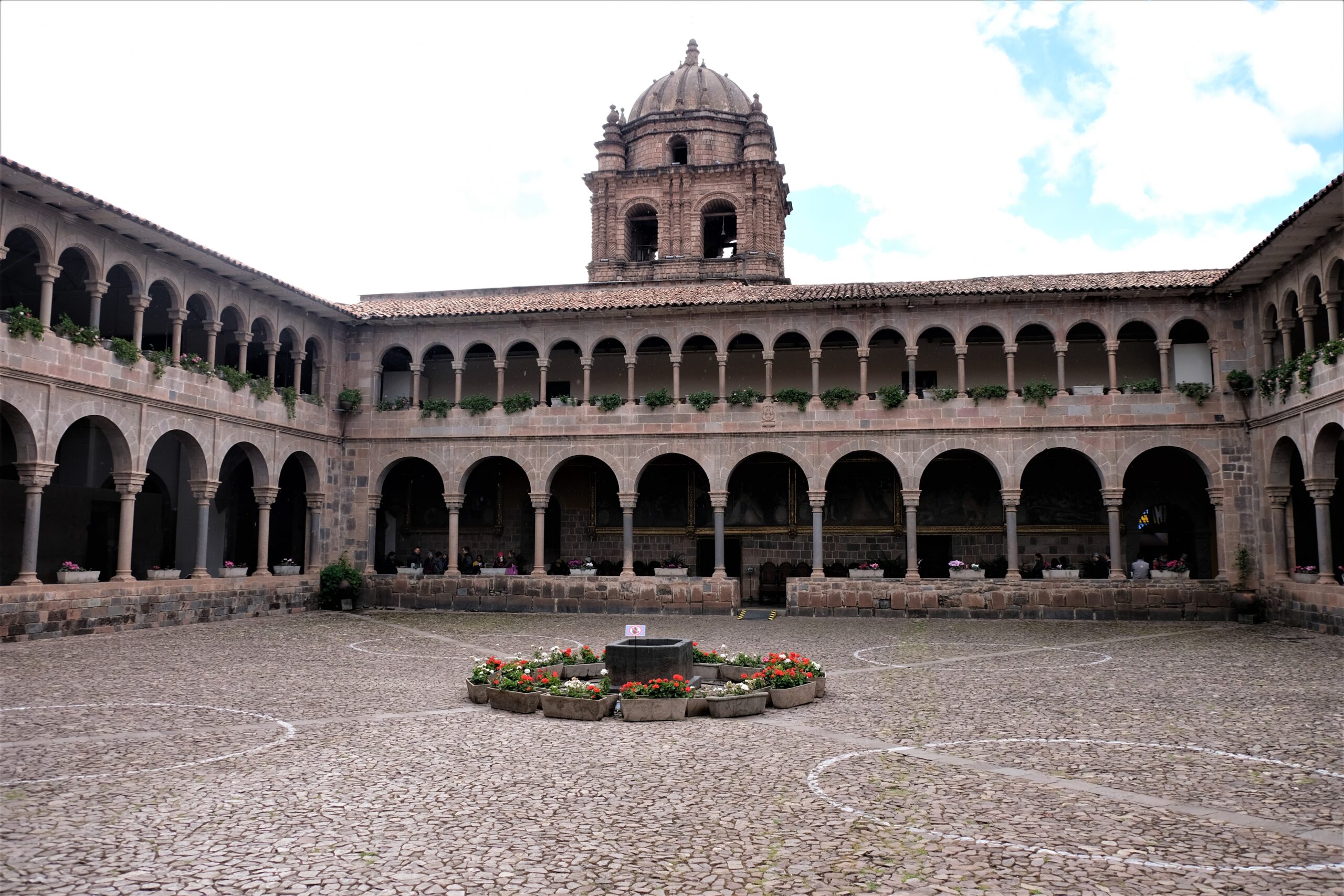
Other notable churches & convent
Note – to make this as succinct as possible most of the below came from Wikipedia.
Basilica of La Merced / Convent of La Merced
Around 100m from Plaza de Armas by Plazoleta Espinar, Basilica of La Merced is a minor basilica belonging Order of the Blessed Virgin Mary of Mercy; founded around 1536 by Friar Sebastián de Trujillo Castañeda. It holds the remains of Diego de Almagro, Diego de Almagro II and Gonzalo Pizarro. The land was donated by Francisco Pizarro 1538, with the first church destroyed by the 1650 earthquake. In 1670 the new church was completed, the tower was finished in 1692.
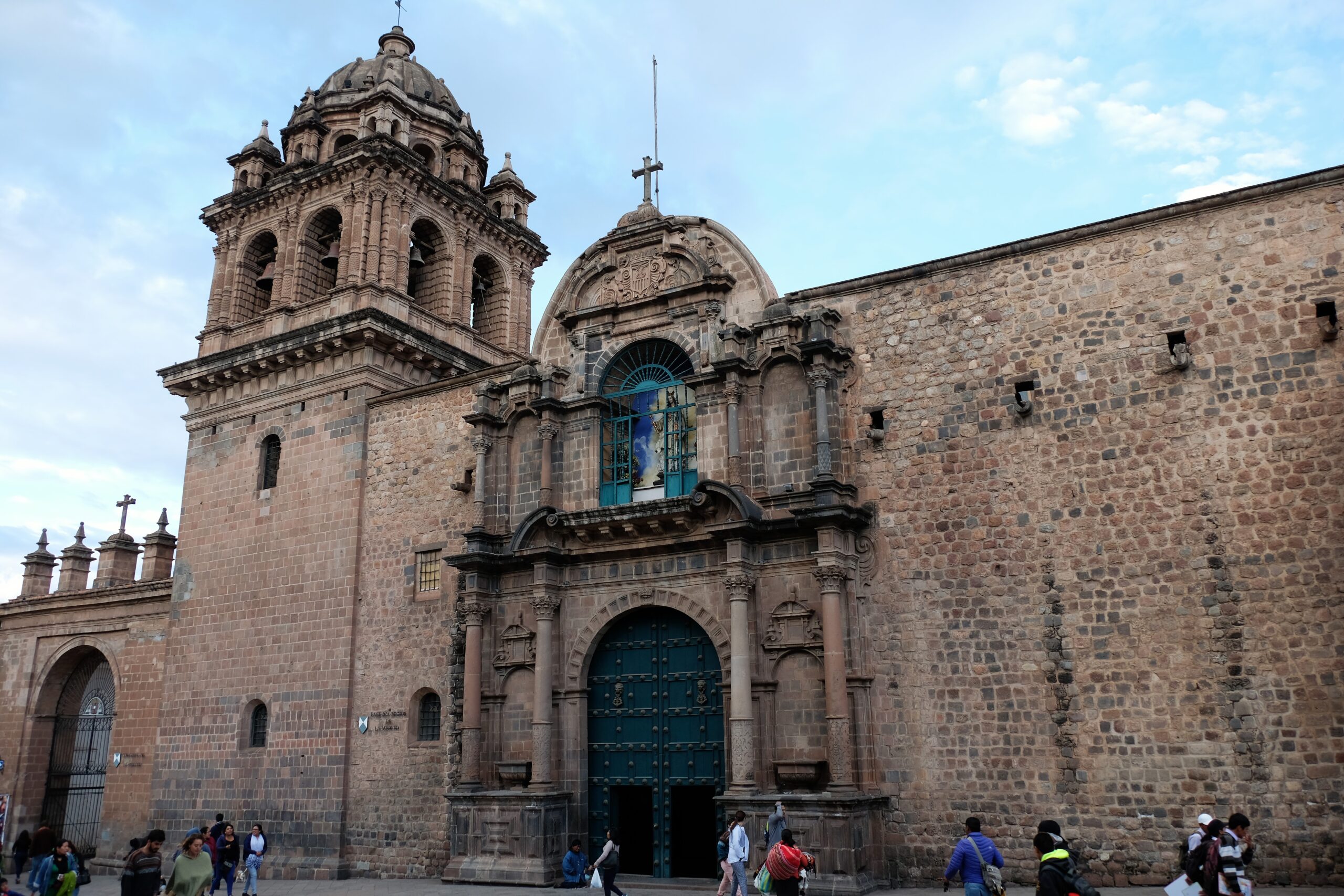
Church of San Francisco de Asis / Church of San Francisco
Part of the Franciscan Friars who arrived shortly after 1534. They moved around three times until settling where the church is today by Plaza San Francisco. One of their previous locations was on top of another Inca palace, Qasana. Viceroy Francisco de Toledo, visited Cuzco in 1572 ordering a church be built in honour of Saint Francis of Assisi. Part of the church was demolished in 1645 to be fully refurbished but the 1650 earthquake destroyed in totally – it was rebuilt by 1652.

Iglesia de San Cristóbal / Church of San Cristóbal
Most people will pass Church of San Cristóbal whilst heading up the hill (stairs) from Plaza de Armas to Sacsayhuaman. Built sometime during the 16th, by Cristóbal Paullu Inca; the brother of Huáscar , Atahuallpa and Manco Inca. Whether he too wanted to become Sapa Inca and therefore cooperated with the Spanish isn’t know. If this was the case he went to far lengths to show his support for the Spanish including being baptised in 1543, changing his name to Christopher – homage to Saint Christopher of Lycia. Here to the original church was destroyed in the 1650 earthquake. In 2007, the remains of its founder, the Inca prince Christopher Paullu Inca, were found buried under the church.

Anecdotes on Cuzco
I’ve included drips and drabs about Cuzco and will continue to do so in part 2 of the city which I’ll do after Rainbow Mountain.
Traditionally dress woman
Around the Historic Centre there are plenty of women wearing traditional dress accompanied by a llama or alpaca; these can either be fully grown or cubs. Not in their traditional surroundings (the llamas/alpacas) these have been washed making them appear like balls of cotton wool and look super cute! Many of the women tout for a photo with either them &/or the llamas or alpacas, obviously for a small fee – touting isn’t aggressive at all. Most people opt for a picture with the llama, if you do, it is worth asking around to compare prices. I didn’t get one, it’s really not my thing and I don’t like having my picture taken not being the most photogenic.
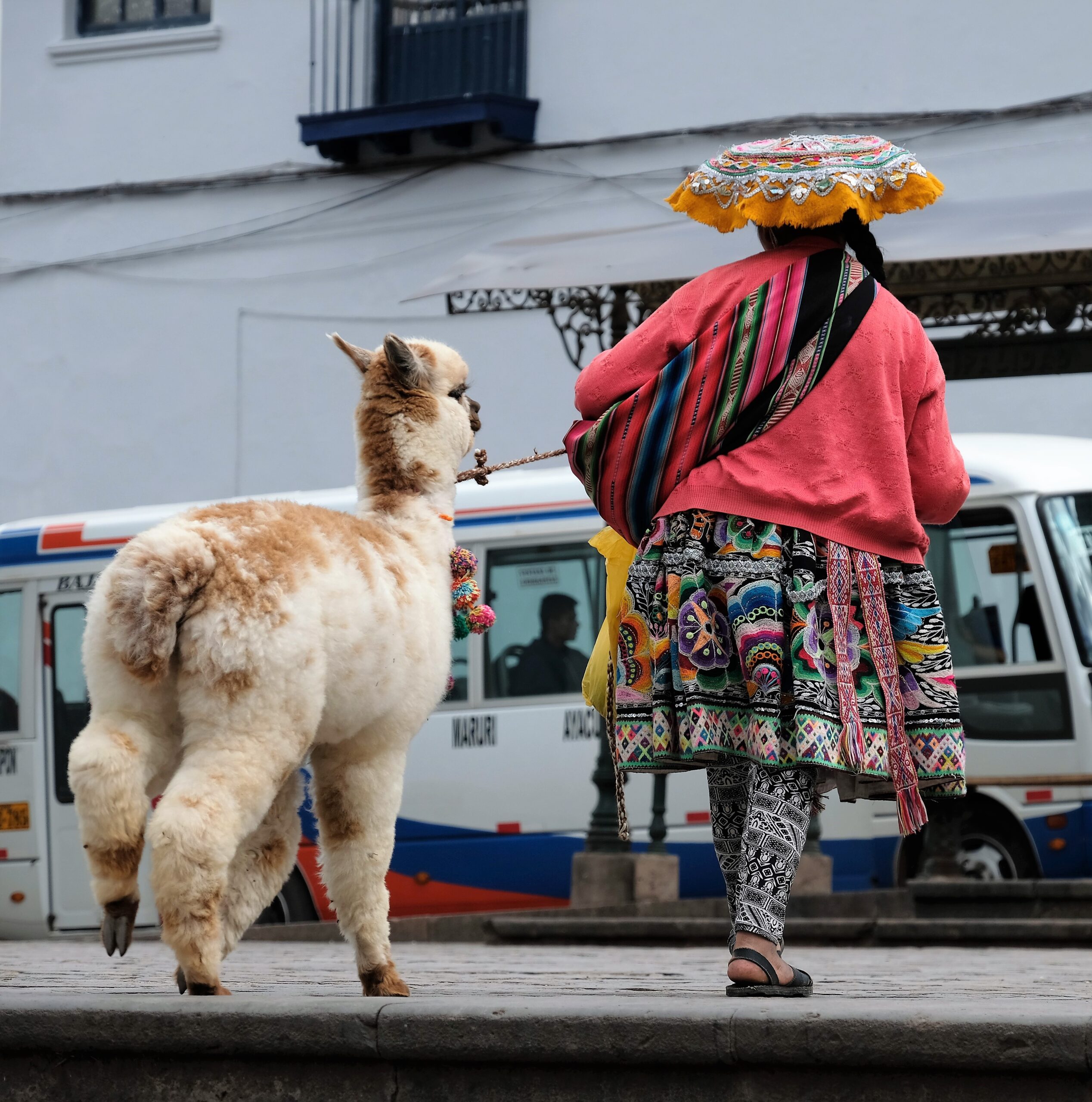
Vibrant colours
If there were ever a place to represent the colours of a rainbow, then Cuzco is it. The local flag is rainbow coloured! Whether it’s the rainbow flags throughout the city flapping in the wind, or the traditionally clothed people, to the vibrant colours of the festivals, Cusco is bursting with colour. Such a contrast to the many whitewashed walls of the buildings. The whitewash flacking exposing the rust red brick beneath. Like so many other places in Peru, the economic position is reflected if you scratch just past the surface. Cusco may not be pretty when you head off the standard routes but is charming and colourful throughout.
Hills and stairs
Mistakenly the city looks flat, ha, just amble around and you find out it’s not! Obviously the surrounding hills are steep, so is the city…deceptively! There are stairs of varying gradients and length dotted all over the city! If you stay very central to Plaza de Armas it isn’t bad other than what I said about North to East of the plaza. Trust me, after a long day hiking these stairs can feel like Everest!


Cobblestone roads
There are throughout the city especially around the historical centre. Polished smooth they look wet reflecting the sunlight. A funny thing to watch are some of the smaller and older cars driving up the steeper roads. Engines roaring, wheels slipping and spinning, from a distance it sounds like a drag racing…except the cars are barely moving. Many cars take a run-up from the bottom hoping their momentum will be enough to see them through to the top. Something about cobblestone roads that are elegant – evidentially as I love taking pictures of them…maybe that’s just me ?
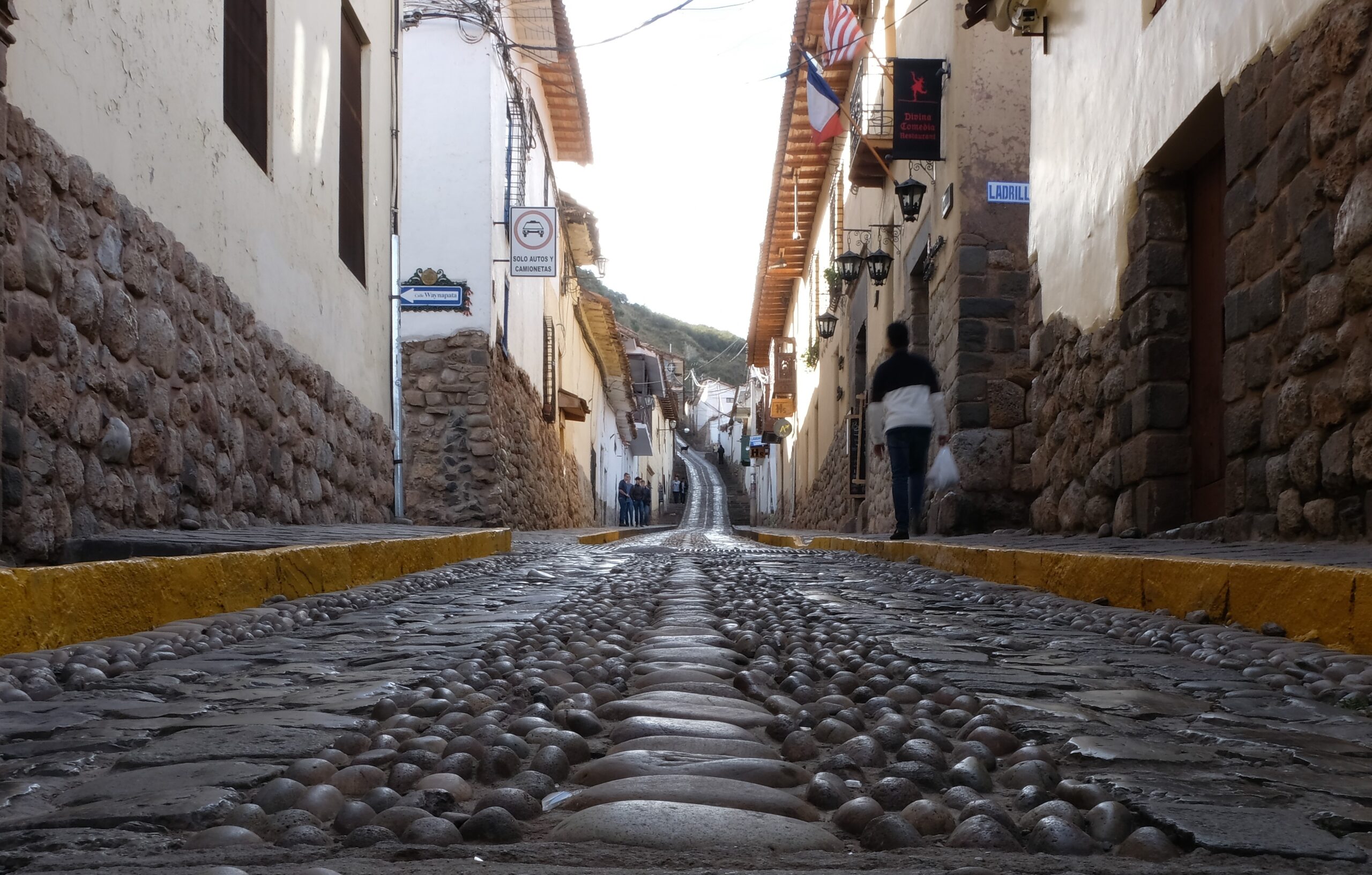
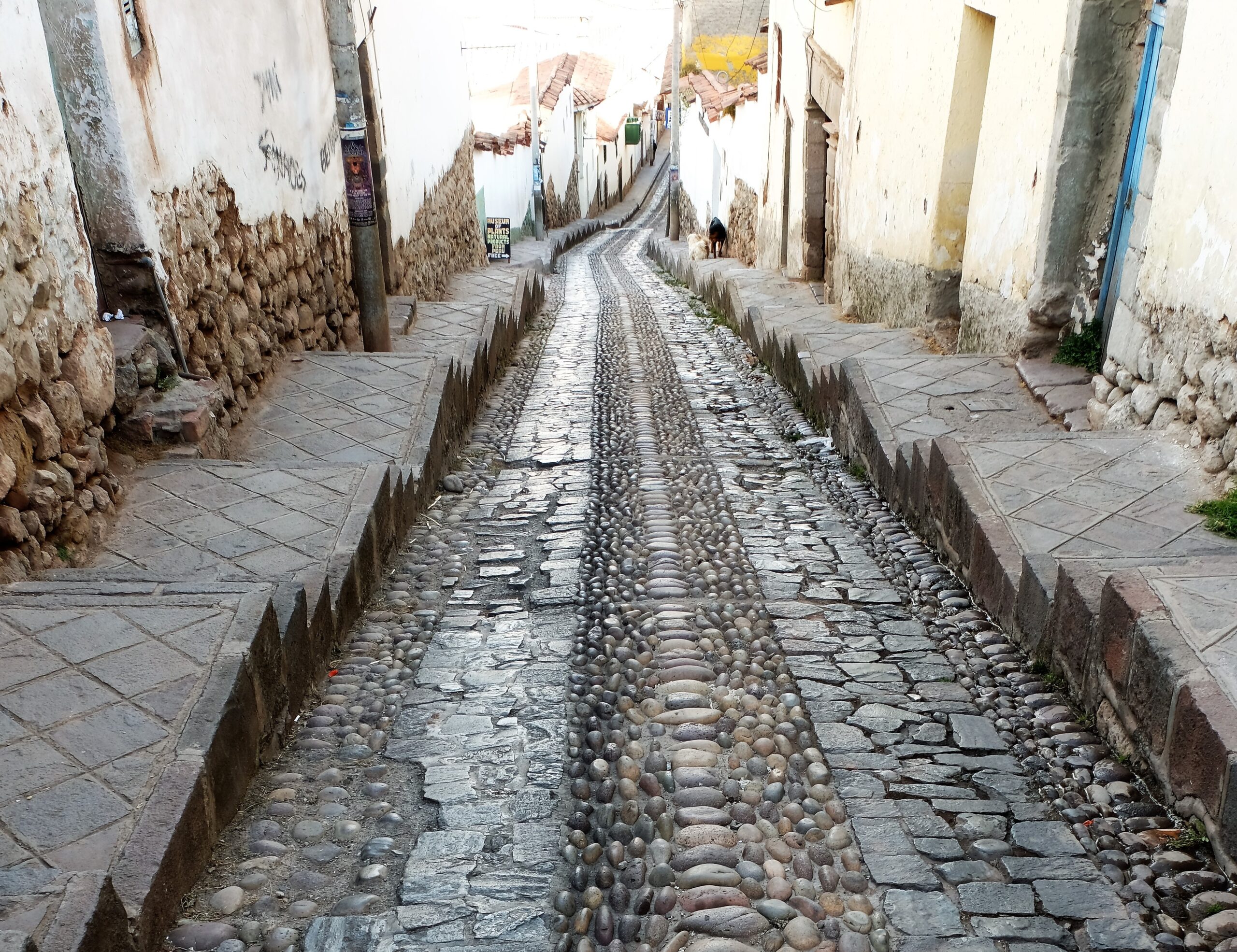
Reserved and happy people
Everyone was friendly. At first I felt they were aloof, not so. I’d now say they are reserved and like to keep to themselves. If I asked a stranger a question and they understood English or my terrible Spanish they were more than happy to try and help. I walked far out of the touristy areas and never had the slightest feeling of concern. The restaurants were all super polite and during the festivals/celebrations around Plaza de Armas you will not find anyone without a broad smile.
Temperature & Weather
The weather during my time I Cuzco was topsy turvy to say the least, early June. Maybe it was the altitude that added to the constant changes. From quite warm, shorts and t-shirt to cold in the evening, three layers (shirt, fleece, shell-down jacket, trousers and beanie – need to update my travel gear section!). Even some days were quite chilly to with regular light rain adding to the chill. Hiking at altitude could have added to the heightened sensitivity to the weather changes; body using more energy with less oxygen making it more sensitive to changes. It goes without saying, the higher you go the more unpredictable the weather becomes and that’s without factoring the wind. High up can be serene one minute then you turn around and it’s a howling gale force – that’s when the wind really bites!
Food
The place may look Spanish, but quintessential it’s Peruvian, that goes for the food too! Unlike my first evening’s surprise dinner (chicken foot), the food was great for the rest of my time there. One restaurant in particular was Inka Grill on Plaza de Armas. Food was so good I went back a few times…I should have been more adventurous – oh yes, the service was great and always with a smile. After my third time there they gave me a free dessert! I ate at a few other places too.

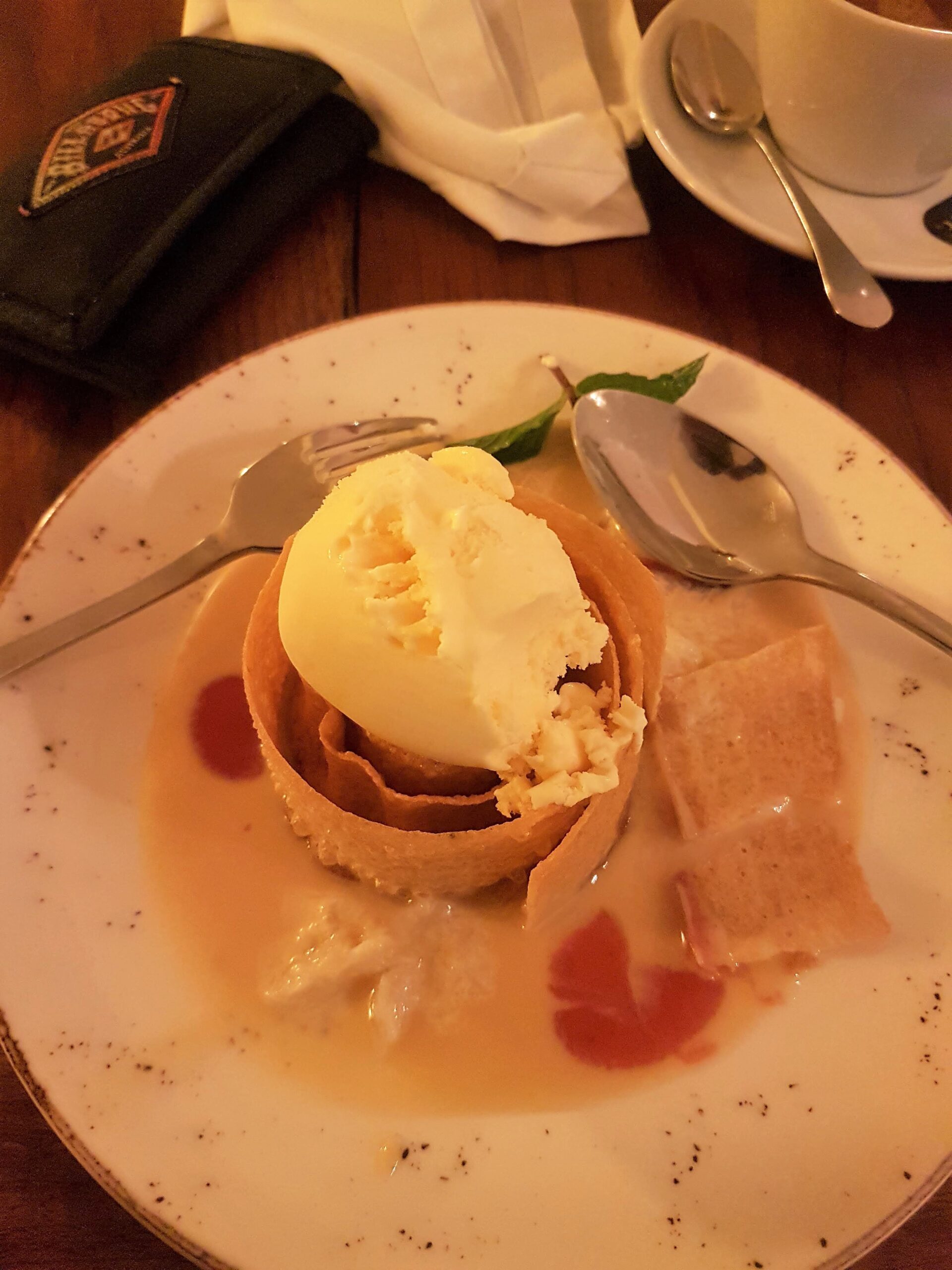
Pucara Bulls – ceramic bulls on rooftops
I only noticed these during my second round in Cuzco, when I came back from Machu Picchu. Wanting a bit of R&R I chose Casa Boutique Spa Encantada; halfway up the North’ish from Plaza de Armas. A nice little hotel, pity as the internet wasn’t working properly in the neighbourhood because of damage to the lines. This wasn’t the end of the world, I wanted to take this time to relax and plan my route to Bolivia. There was so much still to see in Peru…time had come for me to move on. Having very slow internet (felt like dial-up) isn’t the end of the world, there are plenty of coffee shops/restaurants/cafes in Cusco. What made it bad was some of the visitors at the hotel; constantly complaining to the staff (even more irritating complaining out aloud) who could do nothing to resolve it. If it was only the hotel with a problem then fair enough, but this was affecting the entire neighbourhood!
I’ve digressed. Like I said, I only noticed these when I stayed at Casa Boutique Spa Encantada, because of its location. Looking out at Cusco below from the balcony, the terracotta tiles undulating across the city like waves of reddish brown. On many of the rooftops are two ceramic bulls, male and female. Called Pucara/Pukara bulls, named after the town which produces them (about 45km East Southeast of Cuzco); they bring the occupants happiness, prosperity and protect them. It has Catholic connotations however the foundations come from Inca times. Bulls were introduced to Peru by the Spanish, the bull superseded where previously llamas or alpacas were once used.
The story goes; Pucara was in a sustained drought so the village people decided to sacrifice a bull to the deity Pacha Kamaq on the Pacha Kamaq rock. The bull sensing his fate resisted, eventually ramming the Pacha Kamaq rock piercing it with one of his horns. From the hole poured out the purest of water, enough to supply all the villagers and their farms.
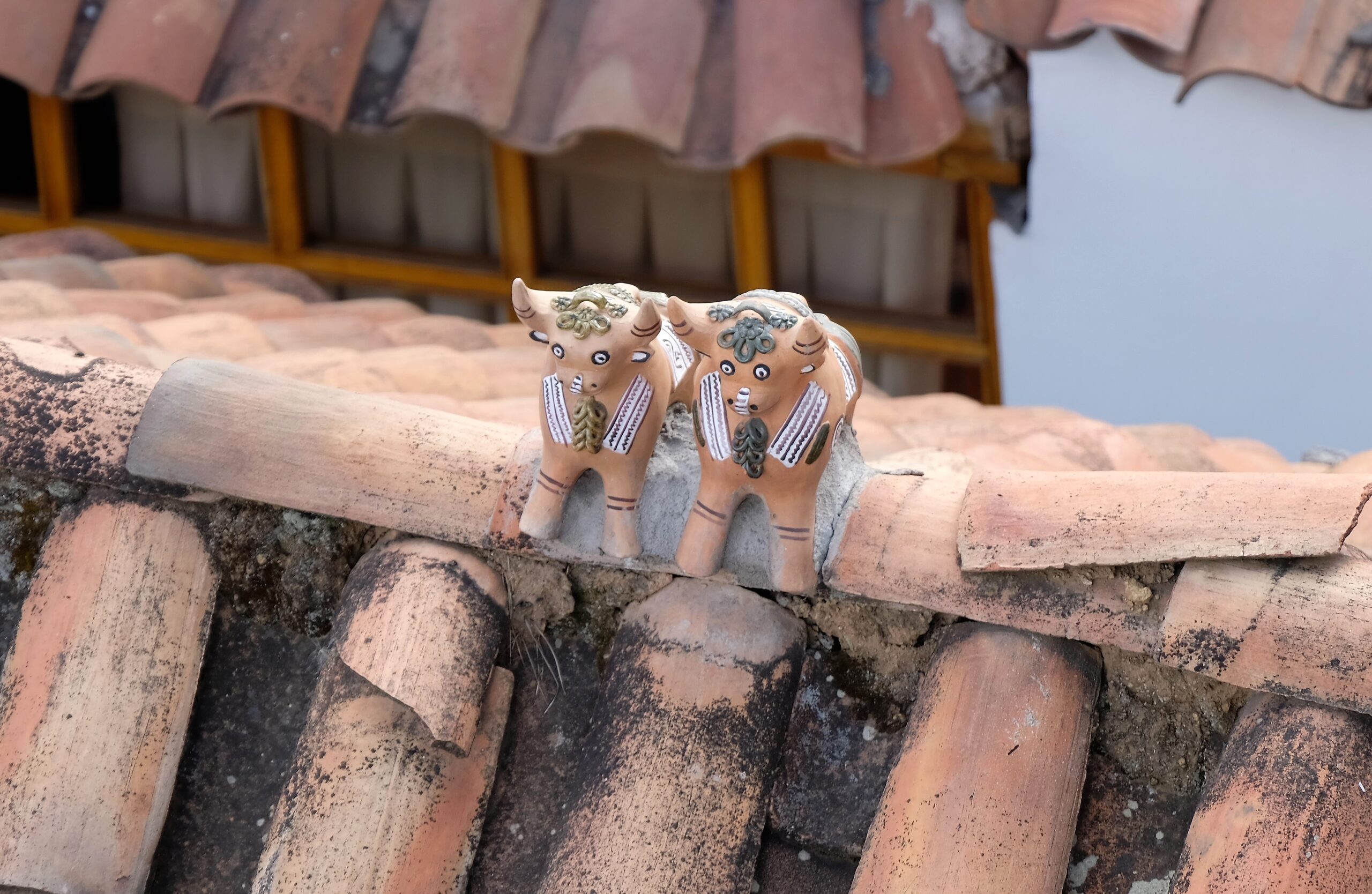
That’s the end of Cusco Part 1. Part 2 will be shorter but I’m hoping I can add quite a few videos of Cuzco’s festivities.
Took this in a colectivo whilst driving back into Cuzco. Give you an idea of the city outside of the historical centre…and how squeaky the colectivo is?
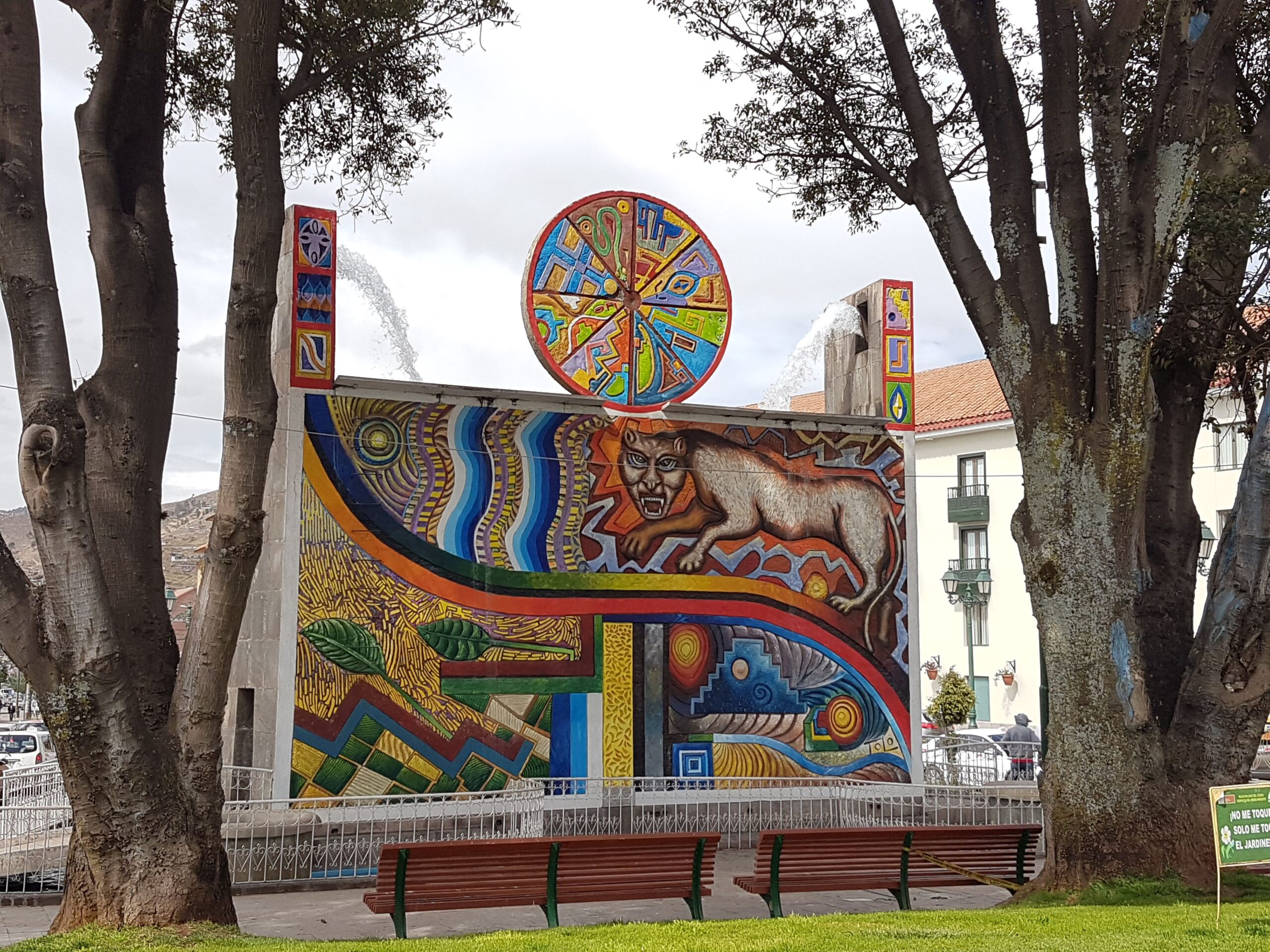
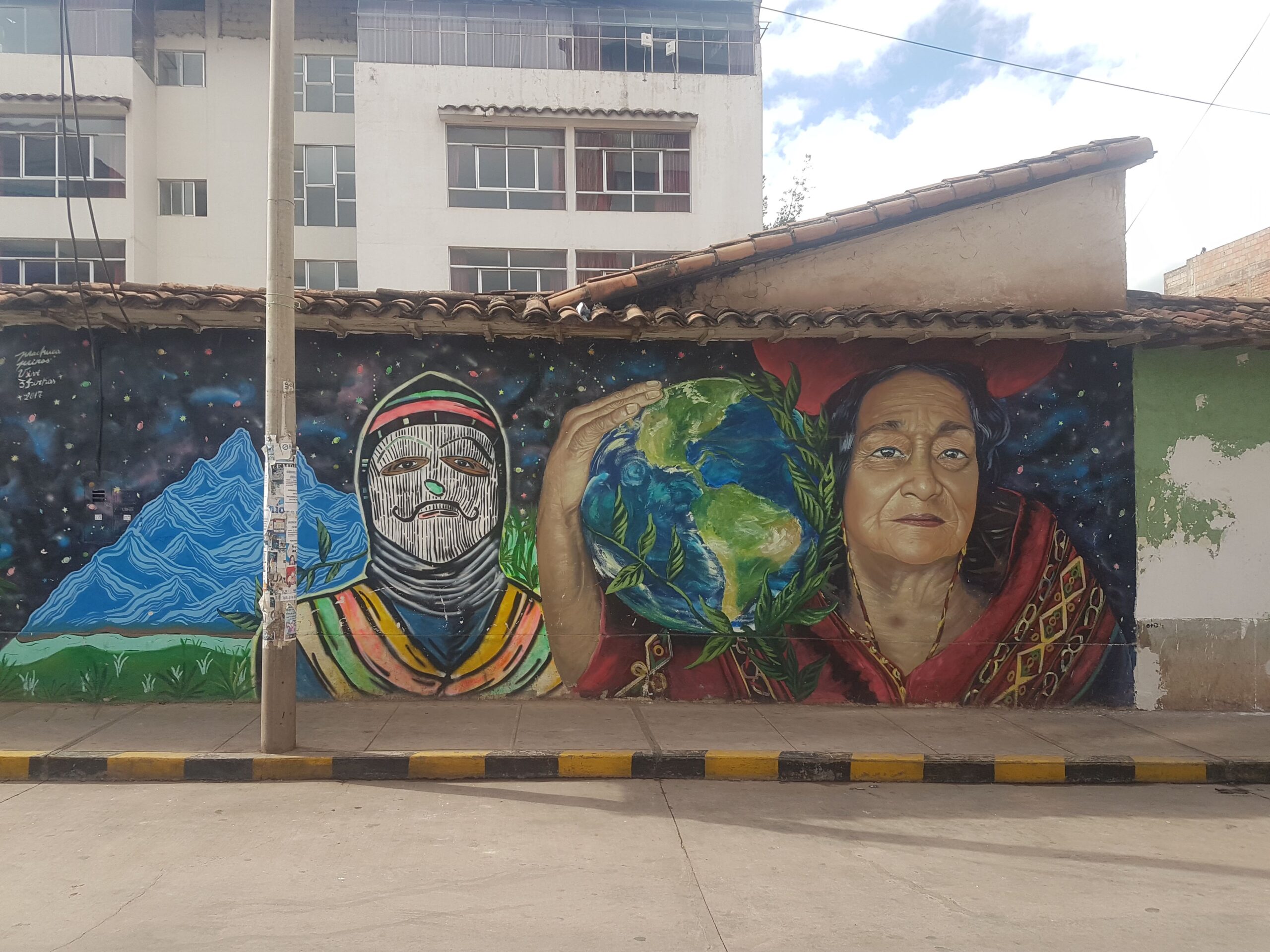
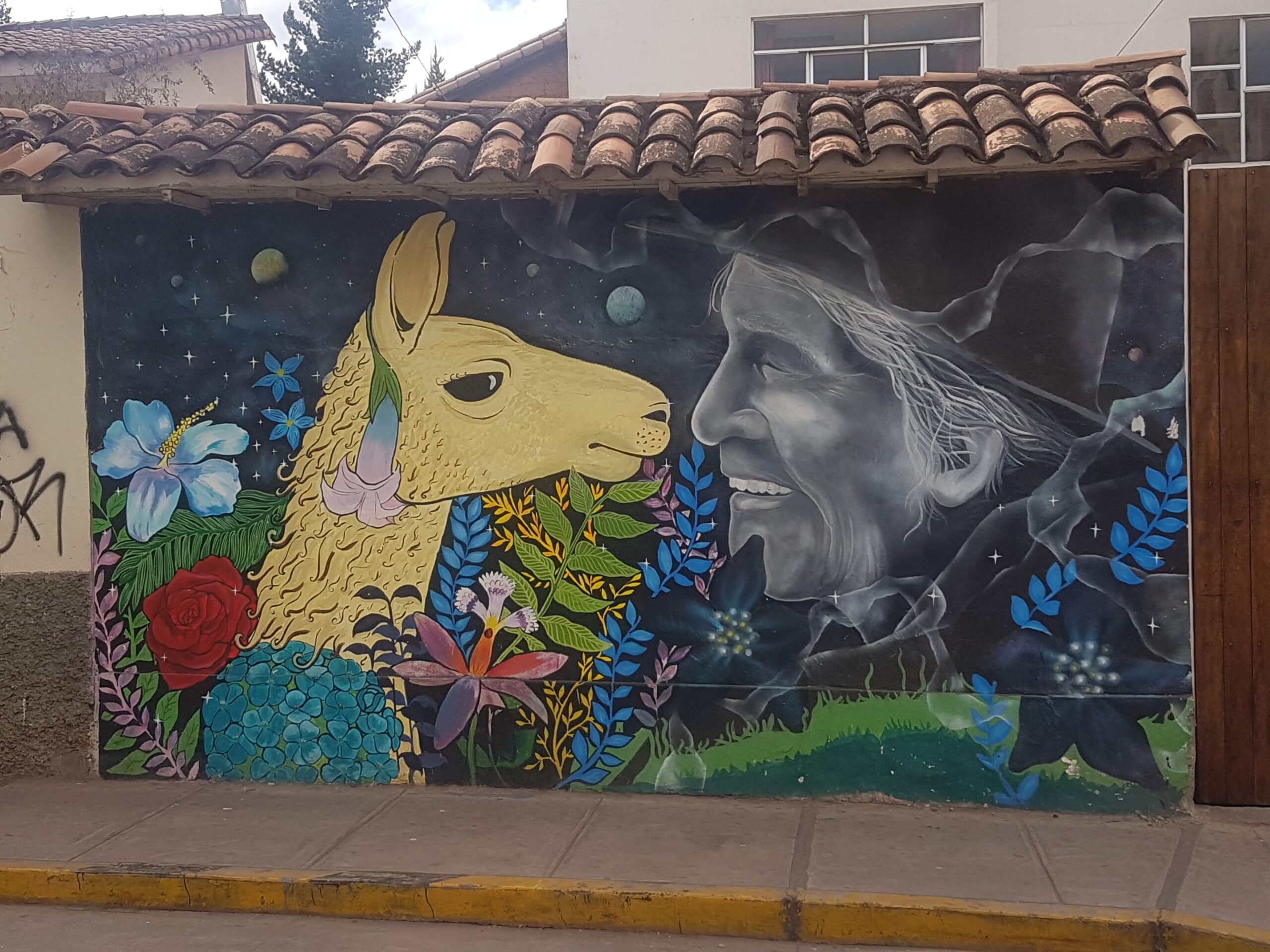
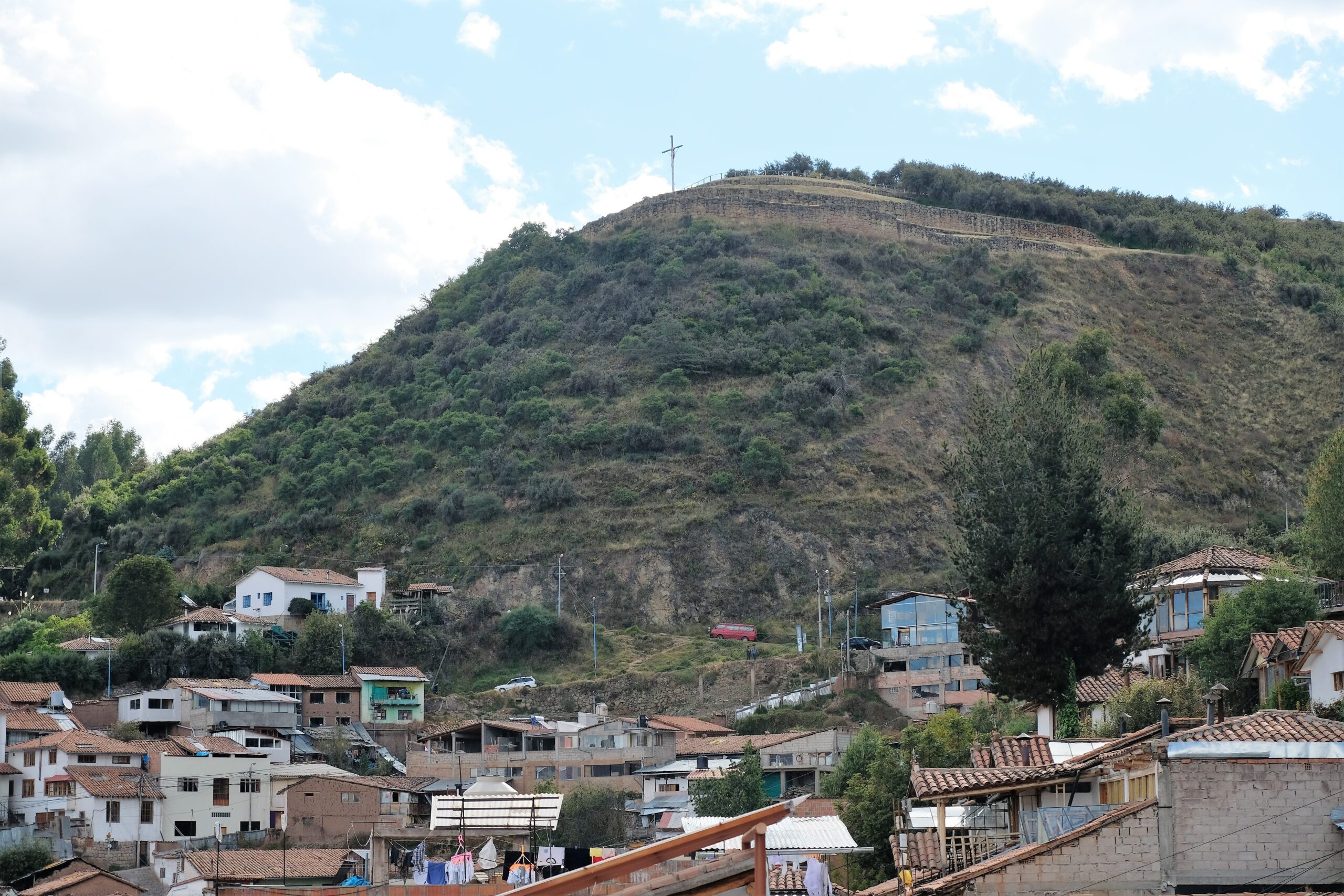

One Reply to “Cuzco, Cusco, Golden Temple and more”
Comments are closed.